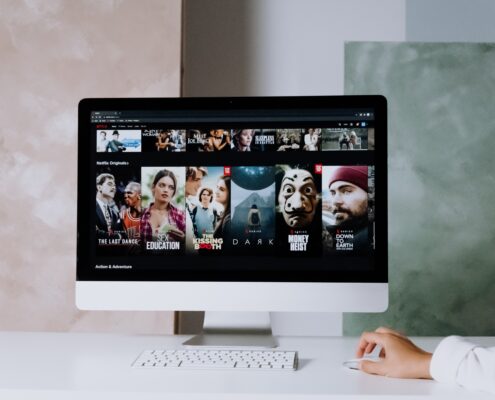
Apomediation and Disintermediation: YouTube Prescribers on Fad Diets
As a result of the confinements of the COVID-19 pandemic and the sedentary lifestyle due to teleworking, there is an increase in weight gain and dietary carelessness in the population, which leads to an increase in offers of fad diets based on recommendations made by digital influencers. The aim of the study was to examine the characteristics of dietary recommendation videos made by non-health professional prescribers in Spanish and English to understand what patterns are followed by the productions of this type of content and what effects they have on the interaction they receive. An exploratory walkthrough method analysis was applied to define the variables of a codebook, followed by a content analysis of a sample of 50 videos published between January 2020 and July 2021. Most of the videos are published in the first months of the year, probably aimed at users seeking to reduce the weight gained during Christmas. The productions were characterized by having a very personal tone, informative and with relatively plural information, sometimes addressing the risks of diets or slimming products, and, although recommendations abound, the voices of experts are not frequent. The products and diets addressed in the videos often have a high health risk and do not involve practices recommended by experts, so although sometimes their contraindications or associated risks are pointed out, the promotional component and the search for traffic to the channel seem to be more relevant factors than public health in these videos.

Patterns and Actors of Disinformation: Analysis of Debunked Hoaxes in Spain in 2022
This research examines the patterns followed by disinformation in Spain through the fact-checking activities of Maldita.es, the leading fact-checking organization in Spain. We sought to answer three research questions: 1. What are the predominant topics of the hoaxes debunked by Maldita.es? 2. Who is responsible for the creation and dissemination of these hoaxes? and 3. In what formats and platforms are these hoaxes generally distributed? For this purpose, we conducted a quantitative content analysis of 729 hoaxes fact-checked in 2022 by Maldito Bulo. 40.7% of the debunked hoaxes were related to social issues, while 37.2% focused on political affairs. Regarding those responsible for the creation and dissemination, most of the hoaxes came from unidentified sources, although when the identity is known, the most frequent contributors are social media accounts, alternative and partisan pseudo-media, and journalists. These results explore the general disinformation scenario in Spain, using fact-checking as an approximation and discussing its implications.

Audiovisual content viewing practices and the psychosocial sentiment of political efficacy in younger audiences from Spain and Mexico
Millennials and centennials are two generations highly involved with social issues at a political and technological level. This interest has been raised in many of these individuals, some members of «woke» communities, a search for politically correct language both in networks and contemporary audiovisual fiction usually consumed on streaming platforms. This study aimed to analyze the psychosocial feeling of political efficacy millennials and centennials have as streaming platform users in Spain and Mexico to determine their predisposition and justification to prioritize their points of view in the face of content censorship and cancellation. The results reveal that centennials have a greater sense of efficacy than millennials, the latter being the most concerned about censorship and freedom of expression when receiving a story.

Audiovisual in the streaming era: Millennials’ and centennials’ perspectives on cruelty and historical truthfulness
The current audiovisual landscape via streaming is characterized by images loaded with aesthetics and violence. Therefore, the main objective of this study is to decipher the audience’s feelings about the violent and dystopian plots that saturate the current panorama of audiovisual entertainment through a survey aimed at millennials and centennials in Spain and Mexico, who are the viewers who consume the most streaming platforms of the two countries. The results show that viewers do not feel that these series, contrary to what it might seem, cause them sadness or low spirits, and, likewise, these viewers consume these products without having a specific idea of whether the audiovisual should show cruelty, historical accuracy or the vicissitudes of the world. In conclusion, this research provides a current map of the feelings of the OTT audience about the shocking, bloody, and visceral images that are so present in the routine of young audiences.

Impact of Teaching Workload on Scientific Productivity: Multidimensional Analysis in the Complexity of a Mexican Private University
Researchers primarily dedicate their time to teaching in Latin American universities. For this reason, it is essential to determine how teaching time affects (or contributes to) the scientific productivity of researchers working under these conditions. We analyzed the incidence of gender, groups taught at undergraduate and graduate levels, the researcher proficiency level, and the number of thesis students advised, among others, for the impact on the scientific productivity (annual publications) of a group of professors. We analyzed the data using both statistical and regression methods. Contrary to our initial hypothesis, the number of groups taught does not significantly influence research productivity; it is affected by other factors such as belonging to the Mexican Researcher System (SNI) or having a researcher or administrative position at the institution. Our results can help guide the formulation of academic and research policies that contribute to the scientific productivity of Latin American universities.

Owned media, influencer marketing, and unofficial brand ambassadors: differences between narratives, types of prescribers, and effects on interactions on Instagram
In the current era of the attention economy, users find themselves in social networks over-saturated with advertising that tends not to catch the public’s attention or have great credibility. In this sense, brands are trying to get closer to their audiences by using non-invasive, user-generated storytelling strategies with a more natural and experience-focused message. This research aims to compare which narrative elements used by the official accounts of 5 Ibero-American nation brands on Instagram and by the users (UGC) of hashtags promoted from those official accounts generate greater organic interaction on that social network (likes and comments). With a correlational view, we seek to compare whether the promotion of countries generates greater interaction between those generated by owned media and by users (UGC). For this purpose, two analysis sheets were designed and validated to perform quantitative, descriptive, and correlational content analysis and were applied, on the one hand, to 5 official profiles of Ibero-American countries (Argentina, Ecuador, Mexico, Panama, and Venezuela) and on the other hand, using the hashtags promoted from these official accounts, the 100 posts of user-generated content (UGC) with greater relevance according to the platform were chosen. The main results show that Reels reach almost five times higher than any other type of posts in UGC accounts, while on the contrary, in corporate accounts, they are the types of content with the least interactions. Unlike what one might think, contests (giveaways) on official accounts generated fewer likes and social responsibility content, and posts featuring influencers and celebrities also failed to achieve significant interactions. Overall, official accounts generate the same amount of likes as UGC but significantly fewer comments. Brands only outperform UGC in likes in individual Photographs or Photo Rolls, while UCG outperforms brands in Reels for both metrics.

Journalism on Forced Migration in Latin America: Recommendations from Experts and International Journalism Guides from a Qualitative Study
Wars, insurgent groups, dictatorships, and economic crises are the main reasons for forced migration. Displaced persons, asylum seekers, and refugees often face public stigmatization, as they are treated by the media as a social problem and, in many cases, seen as economic and social threats. This article presents the results of in-depth interviews with expert journalists and researchers from different Latin American countries on the phenomenon of forced migration and its journalistic coverage. Their recommendations are complemented by Qualitative Document Analysis (QDA) of international guides on migration journalism. The findings highlight the need for training and awareness-raising in critical skills and social analysis for journalists to understand the complexity of human mobility and approach it from a human rights perspective, as well as to project the positive contributions of migrants to the host society. Findings suggest the need to avoid disseminating and magnifying hate speech, which may be used to justify discrimination and violence against migrants. This highlights the fact that migration issues must be dealt with under slow journalism schemes, with an emphasis on research, thus avoiding falling into xenophobic discourse due to the very immediacy that the digital ecosystem demands.

‘Millennials and centennials’ perspective on Streaming narratives in Spain and Mexico: Spiral of silence, bandwagon effect, and third person effect
Viewers are increasingly used to the link between entertainment and technology in the current media ecosystem. The success of consuming streaming platforms when watching movies and series shows how the audience is more involved in new forms of viewing, at any time, at any moment, and with any content. This research aimed to examine the perception of millennial and centennial audiences in Spain and Mexico, the two Spanish-speaking countries with the highest streaming consumption, about audiovisual content producers for entertainment. Three theories on public perception (spiral of silence, bandwagon effect, and third-person effect) were used as the basis of the research questions to unravel the extent to which younger audiences in these countries consider that production companies are, or are not, ethical in the representation of what may be labeled as "sensitive topics". The results show that centennials are more confident in their critical perceptions of controversial issues in movies and series, while, on the other hand, millennials approach their perceptions with more cautiousness and confusion.

Iconographic-symbolic analysis model of Corporate Visual Identity (CVI): Application test on pharmaceutical companiesin Spain
This study presents a taxonomy to analyze the Corporate Visual Identity (CVI) through the theoretical construction of iconographic variables. The instrument was validated by an expert panel and a pilot test that examined the CVI of the 50 leading pharmaceutical companies in Spain. The instrument was organized by graphic elements: iconographic sign, linguistic sign, and plastic sign, and helped to catalog the symbolic components of CVI. In the Spanish case, due to its cultural and social context, pharmaceutical brands prefer typographies with no strokes, simple lines, capital letters, and round and medium strokes.

Girl YouTubers: Interaction, creation, and emotions during COVID-19 confinement
The COVID-19 pandemic forced absolute confinement in Spain from March 15 to July 21, 2020. On the other side of the screen, YouTubers girls and boys, creators of specific content for their peers, took the opportunity to increase their productions. This research examines 73 creations made during the confinement period by six Spanish girls YouTubers categorized as influencers by the number of reproductions and followers of their channel sthrough content analysis to evaluate the interactions, the content generated, and subjective aspects of projection of the emotional state of these minors. The results show increased interactors, positioning the female sector as the most prevalent gender. The contents have been related to the COVID-19 theme, while, in the emotional aspect, the influencers were not affected by the great sadness that hit Spain with the death of thousands of people.
